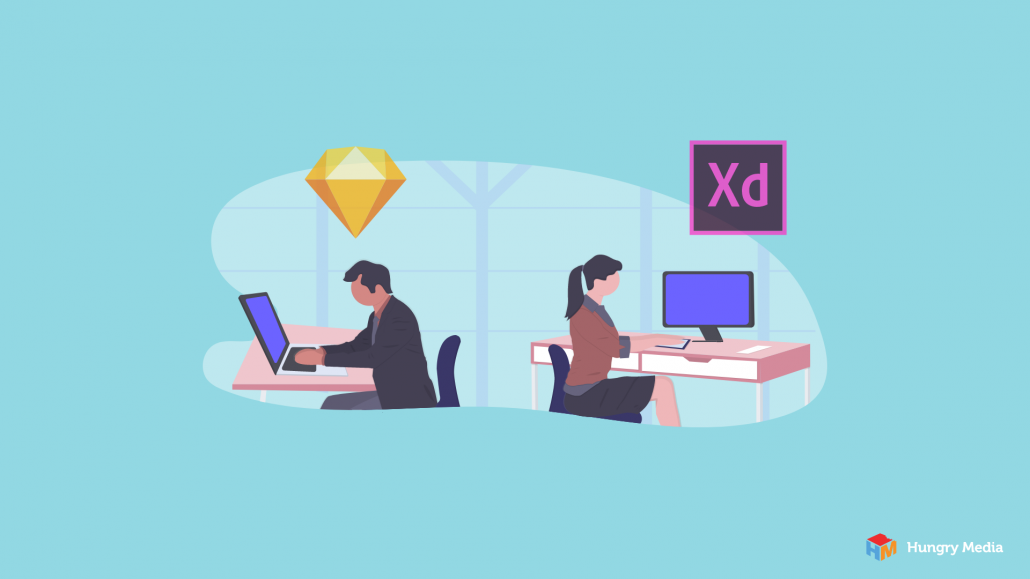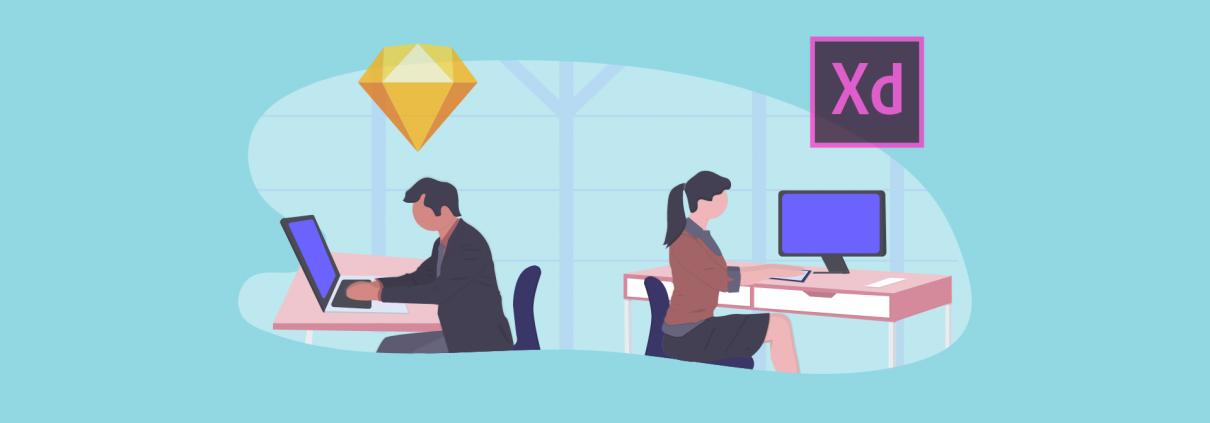
Most of us are so used to interacting with electronic devices in the form of smart phones, tablets, and computers, that we might find it difficult to carry out our everyday tasks without them. This is a testament to effective web page user interface design, executed with the end user in mind.
What is a User Interface?
It is not terribly difficult to define “user interface (UI).” Simply put (for our purposes, at least) it is the means by which a user interacts with a software system. Think about your computer desktop, which is an example of a user interface. Meaning all of the icons, colors, buttons, feedback schemes, and anything else you interact with on your screen are a part of the interface. Similarly, what you see when you use a website or mobile app is a user interface, as well.
In short, a user interface is the point of human and computer contact. And behind every UI interface there is the designer who thoughtfully created it.
What is Website UI Design?
So, what is user interface design and what does it mean for you? Website UI design uses visual elements to communicate meaning to the user.
UI design of websites or mobile apps focuses on selecting the best elements for each action a user may take and designing them in a way that conveys meaning. Ideally this meaning is expressed so well, and the site functions so flawlessly, that users don’t notice the design itself.
Make the Most of User Interface Design Principles
Effective website UI design starts with research. Using surveys, studies, and psychology, you can learn all about your users, their habits, and how they interact with your technology.
Demographics
Who are your users, exactly? The better you get to know your target audience, the more effectively you can use web UI design to create an interface that works for them. Considerations can be as broad as their gender and as specific as the shoes they love to wear. No detail is too small when it comes to learning about the end user.
Define How Users Will Interact with Your Interface
Before you determine the best way to integrate UI design elements into your app or website, you need a clear understanding of the ways in which it will be used. Which type of device will your app be used on most? Where will users be when they’re interacting with it?
By taking some time up front to really define when, where, and how the audience will use your app or website, UI design will be much easier down the road.
Analyze Data
It would be amazing if user interface design were evaluated on aesthetics of our sites alone. Alas, the user is King, and they determine whether you’ve achieved the goals set by your website UI design plan.
Review analytics after you launch to see how you did. Take a look at bounce rates, cart abandonment rates, traffic sources, session times, and so on. This will help you learn where and how to tweak you interface for maximum effect.
Features of User Interface Design
After you’re sure you know your users, you can begin to design your interface. Let’s take a look at some practical tips for creating your mobile app or website using UI design techniques.
Set Expectations
If you let users know what will happen before they take an action, they will find your interface to be much more user friendly. Nobody wants to be taken by surprise when they click a button or make a selection.
Anticipate Mistakes
Everyone makes mistakes, and no matter what type of website you manage or how perfectly you’ve designed your UI, your users will, too. One of the most common responses upon making a mistake is frustration. One of the most important jobs of website UI design is to minimize frustration by anticipating your users’ mistakes.
Making an unintended selection, leaving a page earlier than expected, hitting delete instead of submit. To boost user experience, design an interface that makes it easy to avoid or undo these mistakes.
While there is certainly no “right” way tackle this, here are few user interface elements that can help:
- Buttons that don’t become active until all required form fields are completed
- Detection of an incorrect email address format
- Confirmation dialog boxes for destructive actions
- Error messages that clearly explain a mistake
- A button to recover deleted files
Provide Timely Feedback
Think about the ways in which we receive feedback all day long. You wave to the mailman and he waves back. Your dog wags his tail when you scratch behind his ears. The washing machine turns on when you hit the start button. All of these responses let us know that the mailman, or the dog, or the washer, have received your input.
Likewise, your user interface should provide feedback as users’ input is being processed. How do users know that they hit the correct button, or even hit a button at all? How will they know whether a blank screen is present because the page is loading or the device is frozen?
Here are some elements that can providing clarity to your users in the form of feedback:
- Buttons that “depress” when clicked
- Links that change color once selected
- A progress bar for uploads or downloads
- Graphics indicating a page is loading
Leverage Layouts
Not only does your layout provide a visual aesthetic, but it also provides practical guidance as users navigate the website. Focusing your website UI design on hierarchy and readability as you consider layout will improve user experience and conversion rates throughout. A few ways to achieve this:
- Use consistent alignment. As a rule of thumb, edge alignment is preferred over center.
- Draw attention to important features using color, brightness, and contrast.
- Place control elements in close proximity to the objects they control.
Layout can also help define relationships between elements. For example, elements with little space between them indicates a relationship. Elements spaced further apart indicates the opposite.
Keep It Simple
The more options you present a user, the more difficult it is for them to make a decision. This covers everything in your UI design from navigation menus to pricing information. Don’t worry. You can still include everything you want within the website. Just focus on one main function per page, and leverage other UI design elements to help users navigate between pages as necessary.
Keep it Consistent
Once we’ve familiarized ourselves with the way a website functions, our brain doesn’t have to work as hard to use it. This principle doesn’t just apply to individual websites, it applies to all websites and apps as a whole.
When you make users think again about a process they have already learned, even if it’s as simple as returning to your homepage, you’re requiring them to think harder than necessary. Website UI design is not the place to reinvent the wheel. For the sake of your users, it’s best to stay consistent with industry trends.
Website UI Design with Hungry Media
The good news about UI design for websites is that today’s technology allows us to make changes, test the outcomes, and evaluate results before starting the cycle over. But this kind of trial and error can be both time consuming and costly. Hungry Media can help cut down on the time and expense of designing a user interface via trial and error. Whether you want to improve your UX via UI design, you’re updating your website entirely, or need to build a new site from scratch, we are here to help. Contact us today to see how we can make your website vision a reality.
contributed by Melissa Lucas, senior staff writer



